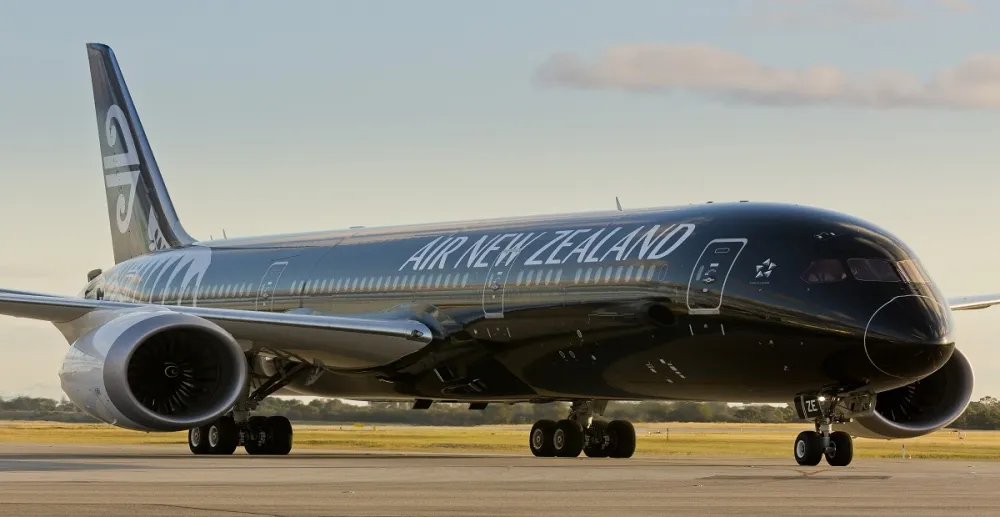
Competition cuts AirNZ profits
Feb 22, 2017

Air New Zealand has reported a decline in profits due to increasing competition in the aviation market. The emergence of low-cost carriers and enhanced service offerings from rival airlines have intensified the pressure on AirNZ's pricing and market share. In response, the airline is focusing on improving operational efficiencies and expanding its route network to retain customer loyalty. Despite the challenges posed by competitors, Air New Zealand aims to leverage its brand reputation and customer service to navigate this competitive landscape while exploring new strategies to boost profitability in the future.
Understanding the Impact of Competition on Air New Zealand's Profits
Air New Zealand (AirNZ) has recently faced significant challenges due to increasing competition in the airline industry. With the rise of budget airlines and enhanced services from international carriers, AirNZ's profits have taken a hit. This article delves into the factors contributing to this downturn and highlights essential strategies for the airline to regain its competitive edge.
The Competitive Landscape
The airline industry is known for its fierce competition, and AirNZ is no exception. The entry of low-cost carriers has forced traditional airlines to reevaluate their pricing structures and service offerings. The following table illustrates the competitive landscape AirNZ is navigating:
| Airline | Market Share (%) | Service Type |
|---|---|---|
| Air New Zealand | 38 | Full-Service |
| Jetstar Airways | 25 | Low-Cost |
| Qantas Airways | 20 | Full-Service |
| Virgin Australia | 15 | Full-Service |
This table shows that AirNZ holds a significant portion of the market; however, the presence of low-cost carriers like Jetstar Airways has intensified the competition. The pricing strategies of these budget airlines have led to a decrease in AirNZ’s customer base, impacting its overall profitability.
Factors Contributing to Profit Decline
Several factors have contributed to the decline in AirNZ's profits:
- Price Wars: Competition has led to aggressive pricing strategies among airlines. As a result, AirNZ has had to lower its fares, which has squeezed its profit margins.
- Increased Operational Costs: Rising fuel prices and operational expenses have further burdened AirNZ, making it challenging to maintain profitability amidst lower fares.
- Customer Expectations: Travelers today expect more for less. The demand for additional services without corresponding fare increases has put pressure on AirNZ to enhance its offerings while managing costs.
Strategies for Regaining Profitability
To navigate through this competitive landscape, AirNZ can implement several strategic initiatives:
1. Enhanced Customer Experience
AirNZ needs to focus on improving the overall customer experience. This includes investing in better in-flight services, offering loyalty programs, and streamlining the booking process to make it more user-friendly.
2. Cost Management
Effective cost management strategies are essential for improving profitability. AirNZ should analyze its operational efficiencies and identify areas where costs can be reduced without compromising service quality.
3. Dynamic Pricing Models
Adopting dynamically priced models could help AirNZ adjust fares based on demand fluctuations. This approach can maximize revenue during peak travel periods while remaining competitive during off-peak times.
4. Strategic Alliances
Forming strategic alliances with other airlines can enhance AirNZ's market reach. Collaborations may include code-sharing agreements, which can help expand route offerings and create more attractive packages for customers.
5. Embracing Technology
Investing in technology can streamline operations and improve customer interactions. By utilizing innovative solutions like AI chatbots for customer service or advanced analytics for route optimization, AirNZ can enhance efficiency and customer satisfaction.
The Future Outlook for Air New Zealand
As AirNZ navigates these turbulent times, the focus must remain on adapting to the ever-changing market dynamics. By implementing the strategies discussed above, AirNZ can position itself to recover from current profit declines and foster a sustainable growth trajectory.
In conclusion, while competition has indeed cut into AirNZ's profits, there are numerous paths the airline can take to regain its footing. By enhancing customer experience, managing costs effectively, and leveraging technology, AirNZ can overcome these challenges and secure a profitable future in the airline industry.
Conclusion
Ultimately, the airline industry will continue to evolve, and Air New Zealand must be agile enough to respond to these changes. The key to revitalizing its profitability lies in understanding the competitive landscape and making informed strategic decisions that resonate with today's travelers.
Related Articles

Explore Thailand: The Best Islands to Visit for Paradise, Adventure, and Relaxation

The Ultimate Guide to the Best Islands in Thailand for Your Next Getaway

Do babies need passports? How to get a passport for a newborn

How to get a U.S. passport fast: here’s how to expedite the process

What is Mobile Passport Control: 5 reasons why you should use it

SENTRI vs. Global Entry: A detailed guide

Do you need a passport to go to the Bahamas? Let’s find out

Do you need a passport to go to Mexico? A detailed guide

Do you need a passport to go to Canada? We got the answer

Do You Need a Passport for a Cruise: An Essential Travel Guide

Booster Seat Requirements: All the Rules to Follow in Your Rental Car

What Are the World’s Most Powerful Passports, and How Does Yours Rank?

How to Take a Passport Photo at Home: A Helpful Guide

You've got to have heart! Southwest's new livery

Your opinion: Should water be free on low cost carriers?

Young women bolder than guys as solo travellers
